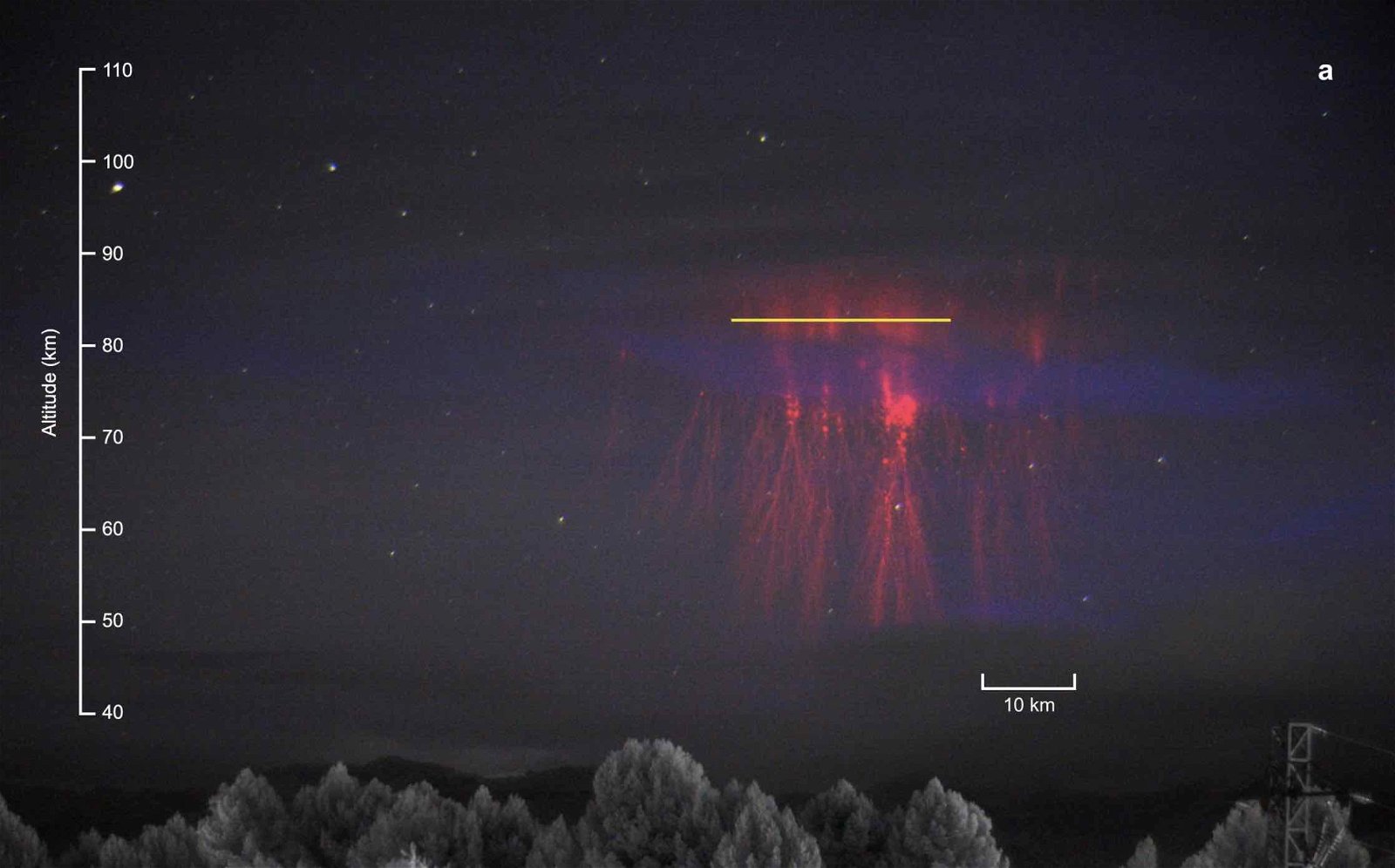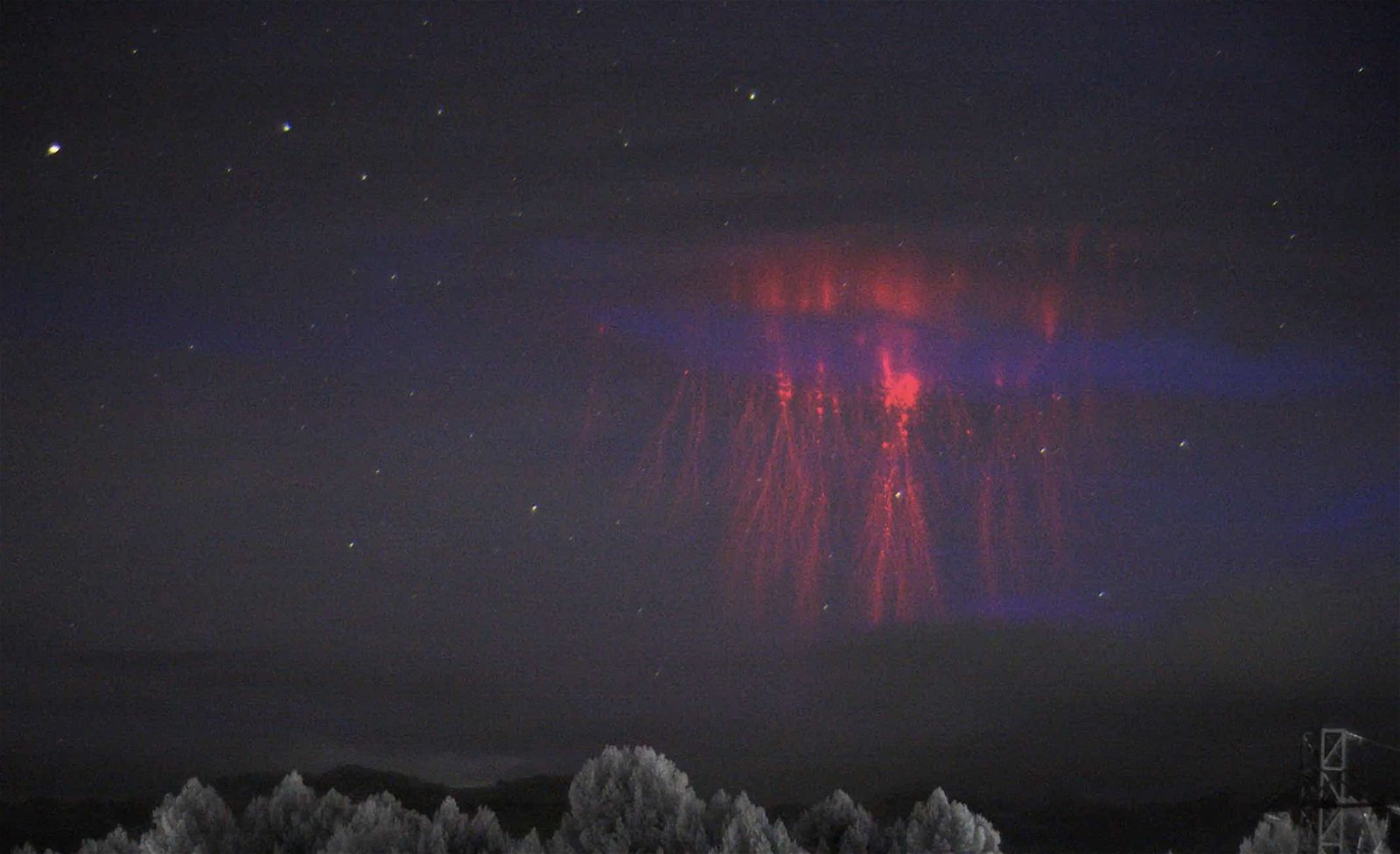Astronomers in Spain have successfully obtained spectroscopic data for the first time on a rare atmospheric phenomenon known as “ghosts,” according to newly published research.
The occurrence, which involved a form of transient luminous event (TLE) known as a mesospheric green ghost, was observed by researchers at the Instituto de Astrofísica de Andalucía, CSIC, Glorieta de la Astronomía, and Universitat Politécnica de Catalunya.
Transient luminous events, or TLEs, are a variety of large—but fleeting—electrical events that erupt above thunderstorms in the upper regions of the atmosphere, usually following strong lightning activity.
These phenomena were first discovered in July 1989 by scientists at the University of Minnesota, who captured the first known image of a large electrical discharge above a thunderstorm. Although it was a chance discovery, it led to the recognition of a phenomenon that became known as lightning “sprites,” which have subsequently been observed in a variety of weather formations, even during hurricanes.


Although additional data and images have been collected about these and other forms of transient luminous events, which along with sprites include halos, elves, blue jets, and a particularly large variety aptly named gigantic jets, their fundamental cause remains unknown.
In the spring of 2019, a particularly interesting observation was made by a photographer documenting a sprite storm above Oklahoma, where over the top of several energetic sprites a green glow could be perceived, lasting only a few milliseconds. The phenomenon, believed to be produced by excitation of oxygen near the peaks of the sprites, was thus given the official name “Green emissions from excited Oxygen in Sprite Tops,” giving rise to the more informal title of “ghosts.”
After the images appeared online, it led to significant interest in the phenomenon, and resolving the mystery became an area of focus for the Spanish team who recently published their findings in the journal Nature Communications.
“After the broadcast of the first mesospheric ghosts video images, we started a systematic spectroscopic campaign to analyse the temporal evolution of the spectrum of these phenomena,” the researchers, led by María Passas-Varo, report in their paper.
“The objective was to analyse the temporal evolution of the spectral emissions occurring on top of sprites, in a wavelength range from 500 to 600 nm,” they write.
According to the researchers, atomic oxygen is likely to become excited at around 557.73 nanometers (nm), representing an emission line present in auroras and other related atmospheric phenomena that is well described in previous research. The problem had been a paucity of spectroscopic data that allowed researchers to analyze such events, meaning that the specific causes—whether oxygen or perhaps a combination of factors—have yet to be reliably tested.
Now, the first observational results of spectrographic analysis of upper atmospheric ghosts have finally been completed, the team reports.
In line with the theorized atomic oxygen underlying the fleeting appearances of ghosts, the Spanish team’s results nailed down ionic molecular oxygen as a prime factor, along with a series of other contributors that include molecular nitrogen, as well as atomic nickel and iron.
“Additionally, we are able to identify traces of atomic sodium, and ionic silicon,” the team reports of their spectrographic observations, which they say were found to have been “consistent with previous direct measurements of density profiles of meteoric metals in the mesosphere and lower thermosphere.”
As for the cause of the greenish coloration most commonly associated with ghosts, the team writes that “the excited neutral iron at 580.45 nm, 583.46 nm and 586.72 nm can be detected by the green component of most camera sensors, so iron might be a strong candidate to contribute to the long lifetime greenish detection in ghost imaging,” in conjunction with other emissions that occur during these events.
Along with helping to determine what causes the eerie green glow of these atmospheric events, the team says that their findings, which also include evidence of metal traces in the spectra produced by ghosts, warrants revisions to our current understanding of these atmospheric events, and more specifically, an upgrade of current theories “to implement more accurate air plasma kinetic and electrodynamic models under the influence of TLEs.”
The team’s study, “Spectroscopy of a mesospheric ghost reveals iron emissions,” was published in Nature Communications on December 12, 2023.
Micah Hanks is the Editor-in-Chief and Co-Founder of The Debrief. He can be reached by email at micah@thedebrief.org. Follow his work at micahhanks.com and on X: @MicahHanks.

